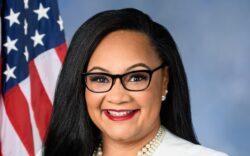I’ve been working on “Trouble in God’s Country” for a little over a decade now. TIGC, as I call it, has its roots in a research project I conducted in 2009. One unexpected byproduct of that research was a frightening snapshot of a divide between Georgia’s haves and have-nots that was much wider and deeper than I expected. Long story short, I decided to take on the task of documenting and reporting the extent and gravity of the problem. I also decided the only way to do that was with a lot of hard data.
If you happen to have read anything I’ve written at troubleingodscountry.com, you probably know that I try to spell out the various challenges facing rural Georgia—economic, educational, health, etc.—in detail. Of course, if you’re reading this in a rural Georgia newspaper, you probably already have a pretty good idea about those problems.
In the weeks and months ahead, I’ll update and flesh out the issues I’ve been researching in as much detail as I can cram into 750 or 800 words. Today, though, I want to try to set the stage with a little history and context.
The notion of the “two Georgias” first bubbled into the state’s political discourse in the 1980s. A University of Georgia economics professor published a paper by that title that documented the state of the widening divide in 1985. The governor at the time, Joe Frank Harris, hotly rejected the idea of such a divide. He even called it “insidious” in one speech. By all accounts, Harris believed that even talking about “two Georgias” would somehow exacerbate the problem.
Fast forward four decades, and the former governor probably isn’t happy with the current situation. Georgia today may well have the widest rural-urban divide in the nation. It’s a hard thing to prove, but I’ve been hard-pressed to find many examples of bigger gaps between top and bottom counties in other states.
Now, the truth is, that’s not entirely a bad thing. Metro Atlanta’s powerful economy and other strengths constitute an asset that the state government should be able to leverage to revive and rebuild areas of rural Georgia that are, by any rational analysis, dying. Great swaths of rural Georgia, especially south of the gnat line, now occupy the bottom rungs of the nation’s economic, education and population health ladders.
That poverty, poor education and bad health come with a high price tag, one that rural Georgia politicians have long been accustomed to leaving on the table for Metro Atlanta. I will argue that it’s in Metro Atlanta’s interest to help rural Georgia, but it shouldn’t have to be with a blank check. Indeed, legislative power is concentrating irreversibly in and around the Atlanta area, and it won’t be long before its representatives can refuse to pick up that tab.
They shouldn’t do that, but they would be well within their rights to demand a big say in what goes on the bill and how they pay it. Rural Georgia’s problems are strategic in nature, and fixing them will require a set of strategic responses that I doubt anyone will like. By that I mean a couple of things.
One is that rural Georgians and their leaders are going to have to be willing to make some major changes in the way they are organized and, most likely, governed. I have never been one who thought county consolidation was a silver bullet for small rural counties, but I have found zero evidence that sparsely populated rural counties can make it on their own in today’s world.
Here’s another thing I mean by strategic response: State government is going to have to engage more forcefully and deeply in shaping and bringing about changes to local political jurisdictions and governments than either state or local leaders will want or like. Exactly what that will look like and how it will work obviously remains to be seen, but I don’t see how the state deals with these problems without bigger (and smarter) engagement by the Gold Dome.
One thing I think it will mean is that state government must now do what it should have done years ago: Go ahead and embrace the fact that there are two Georgias—vastly different regions with different strengths and needs and, critically, increasingly different cultures and politics. Then and only then can our leaders be about the work of fitting the two Georgias back together in a complementary and mutually supporting fashion.
Governor Harris still might not like this first step, but I’d like to think he’d approve of the goal.
Charles Hayslett is the author of the long-running troubleingodscountry.com blog. He is also the scholar in residence at the Center for Middle Georgia Studies at Middle Georgia State University. The views expressed in his columns are his own and are not necessarily those of the center or the university.
Like what you just read? Support Flagpole by making a donation today. Every dollar you give helps fund our ongoing mission to provide Athens with quality, independent journalism.








New Column ‘Trouble in God’s Country’ Examines Problems in Rural Georgia
I’ve been working on “Trouble in God’s Country” for a little over a decade now. TIGC, as I call it, has its roots in a research project I conducted in 2009. One unexpected byproduct of that research was a frightening snapshot of a divide between Georgia’s haves and have-nots that was much wider and deeper than I expected. Long story short, I decided to take on the task of documenting and reporting the extent and gravity of the problem. I also decided the only way to do that was with a lot of hard data.
If you happen to have read anything I’ve written at troubleingodscountry.com, you probably know that I try to spell out the various challenges facing rural Georgia—economic, educational, health, etc.—in detail. Of course, if you’re reading this in a rural Georgia newspaper, you probably already have a pretty good idea about those problems.
In the weeks and months ahead, I’ll update and flesh out the issues I’ve been researching in as much detail as I can cram into 750 or 800 words. Today, though, I want to try to set the stage with a little history and context.
The notion of the “two Georgias” first bubbled into the state’s political discourse in the 1980s. A University of Georgia economics professor published a paper by that title that documented the state of the widening divide in 1985. The governor at the time, Joe Frank Harris, hotly rejected the idea of such a divide. He even called it “insidious” in one speech. By all accounts, Harris believed that even talking about “two Georgias” would somehow exacerbate the problem.
Fast forward four decades, and the former governor probably isn’t happy with the current situation. Georgia today may well have the widest rural-urban divide in the nation. It’s a hard thing to prove, but I’ve been hard-pressed to find many examples of bigger gaps between top and bottom counties in other states.
Now, the truth is, that’s not entirely a bad thing. Metro Atlanta’s powerful economy and other strengths constitute an asset that the state government should be able to leverage to revive and rebuild areas of rural Georgia that are, by any rational analysis, dying. Great swaths of rural Georgia, especially south of the gnat line, now occupy the bottom rungs of the nation’s economic, education and population health ladders.
That poverty, poor education and bad health come with a high price tag, one that rural Georgia politicians have long been accustomed to leaving on the table for Metro Atlanta. I will argue that it’s in Metro Atlanta’s interest to help rural Georgia, but it shouldn’t have to be with a blank check. Indeed, legislative power is concentrating irreversibly in and around the Atlanta area, and it won’t be long before its representatives can refuse to pick up that tab.
They shouldn’t do that, but they would be well within their rights to demand a big say in what goes on the bill and how they pay it. Rural Georgia’s problems are strategic in nature, and fixing them will require a set of strategic responses that I doubt anyone will like. By that I mean a couple of things.
One is that rural Georgians and their leaders are going to have to be willing to make some major changes in the way they are organized and, most likely, governed. I have never been one who thought county consolidation was a silver bullet for small rural counties, but I have found zero evidence that sparsely populated rural counties can make it on their own in today’s world.
Here’s another thing I mean by strategic response: State government is going to have to engage more forcefully and deeply in shaping and bringing about changes to local political jurisdictions and governments than either state or local leaders will want or like. Exactly what that will look like and how it will work obviously remains to be seen, but I don’t see how the state deals with these problems without bigger (and smarter) engagement by the Gold Dome.
One thing I think it will mean is that state government must now do what it should have done years ago: Go ahead and embrace the fact that there are two Georgias—vastly different regions with different strengths and needs and, critically, increasingly different cultures and politics. Then and only then can our leaders be about the work of fitting the two Georgias back together in a complementary and mutually supporting fashion.
Governor Harris still might not like this first step, but I’d like to think he’d approve of the goal.
Charles Hayslett is the author of the long-running troubleingodscountry.com blog. He is also the scholar in residence at the Center for Middle Georgia Studies at Middle Georgia State University. The views expressed in his columns are his own and are not necessarily those of the center or the university.
Like what you just read? Support Flagpole by making a donation today. Every dollar you give helps fund our ongoing mission to provide Athens with quality, independent journalism.
Calendar Pick: Being Dead
Calendar Pick: Wet Meadows